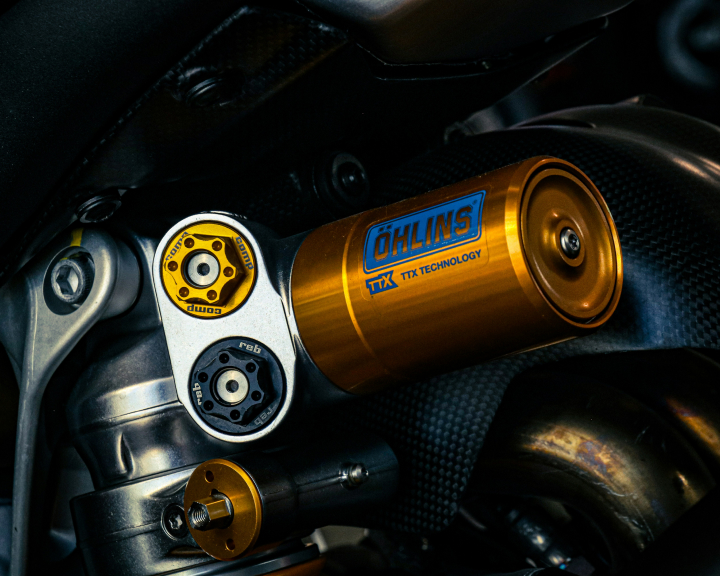Learn about The Dual Combustion Cycle which combines features of the Otto and Diesel cycles, using both constant volume and constant pressure heat addition to improve efficiency in internal combustion engines.
\( \textbf{1}\space\)Introduction
This article will give you a comprehensive overview of the Dual Combustion cycles and present different equations for considering Dual Combustion cycles.
Dual combustion cycles are designed to enhance the efficiency and performance of engines by incorporating two distinct combustion processes: spark ignition and compression ignition. By utilising the advantages of both spark ignition and compression ignition, dual combustion cycles strive to achieve a balance between power output and fuel efficiency.
Understanding these principles is important for scientists and engineers to advance internal combustion engine technology.
Check out our Dual Combustion calculator to run these calcs!
\( \textbf{2}\space\)Definitions
Here are some important definitions to keep in mind for duel combustion cycles!
Isobaric: the process takes place under constant pressure.
Isothermal: the process takes place under constant temperature.Isentropic: an ideal thermodynamic process that is both adiabatic (no heat transfer) and reversible, there is constant entropy.
Compression: a reduction in volume.Addition: i.e. an isobaric addition, where heat may increase and be added under constant pressure.Rejection: with respect to thermodynamics, a rejection usually involves the release of heat to the surroundings during a process.
\( \textbf{2.1}\space\) Phases of Dual Combustion Cycle

1-2 SC Isentropic Compression
3-4 PA Isobaric Addition
5-1 VR Isometric Rejection
2-3 VA Isometric Addition
4-5 SE Isentopic Expansion
\( \textbf{2.2}\space\) Equations used For Dual Combustion Cycle
Equations Commonly Used For Concerning Dual Combustion Cycles
The following are the variables for the equations :
\(V\space\)= the volume. i.e. V(1) is the volume at state 1.
\(r_k\space\)= the Compression Ratio
\(r_p\space\)= The Pressure Ratio
\(r_e\space\)= The Expansion Ratio
\(r_c\space\)= The Cut-off Ratio
\(MEP\space\)= mean effective pressure. The constant theoretical pressure would produce the same network in one complete cycle if it acted on the piston. And can be defined as the following:
$$MEP\ =\ \frac{Net\ Work\ For\ One\ Cycle}{Displacement\ Volume}$$
\(η\space\)= The Efficiency of the Cycle
\(k\space\)= The Adiabatic Index
\(P\space\)= Pressure, \(P_1\) is the pressure at state 1.
Where: \(P_1[D(eff)-N(eff)] = Q(h)-Q(c)\), Q(h) is the amount of heat initially extracted, and Q(c) is the heat expelled.
$$r_k=\frac{V_1}{V_2}$$
\(r_k\), the compression ratio, is the ratio of the volume at the first state to the volume at the second state.
$$ r_c=\frac{V_4}{V_3} $$
\(r_c\), the cut-off ratio, is the ratio of the volume at the fourth state to the volume at the third state.
$$ r_p=\frac{P_3}{P_2} $$
\(r_p\), the pressure ratio, is the ratio of the pressure at the third state to the pressure at the second state.
$$ r_e=\frac{V_5}{V_4} $$
\(r_e\), the expansion ratio, is the ratio of the volume at the fifth state to the volume at the fourth state.
$$ \eta_{\ Duel}=1-\frac{\frac{r_pr_c^k-1}{rk^{k-1}}}{(r_p-1)+kr_p(r_c-1)}$$
The efficiency of a duel combustion cycle is a function of the compression ratio and the cut-off ratio.
$$MEP=\frac{P_1[D_{eff}-N_{eff}]}{(k-1)(1-\frac{1}{rk})}=\frac{Q_h-Q_c}{(k-1)(1-\frac{1}{r_k})}$$
The mean effective pressure is the average pressure in an internal combustion engine cylinder over the entire engine cycle.
In summary, dual combustion cycles represent an efficient approach for the automotive and transportation sectors. They achieve a balance between emissions reduction and improved performance. As environmental regulations continue to evolve, dual combustion cycles offer a pragmatic pathway to enhance fuel economy and lower emissions. Engineers and researchers are pivotal in further developing and implementing this technology to contribute to a more sustainable and effective future for internal combustion engines in the automotive industry.
\( \textbf{3}\space\)References
- Homework.Study.com. 2023. A Dual cycle engine is analyzed using the air standard method. [ONLINE] Available at: https://homework.study.com/explanation/a-dual-cycle-engine-is-analyzed-using-the-air-standard-method-given-the-conditions-at-state-1-compression-ratio-r-pressure-ratio-rp-and-cutoff-ratio-rc-determine-the-efficiency-and-other-val.html#:~:text=Question%3A-,A%20Dual%20cycle%20engine%20is%20analyzed%20using%20the%20air%20standard,and%20other%20values%20listed%20below.. [Accessed 26 October 2023].
- LinkedIn. 2023. Important Thermodynamic Concepts. [ONLINE] Available at: https://www.linkedin.com/feed/update/urn:li:activity:7095576421120548864?utm_source=share&utm_medium=member_desktop. [Accessed 24 October 2023].
